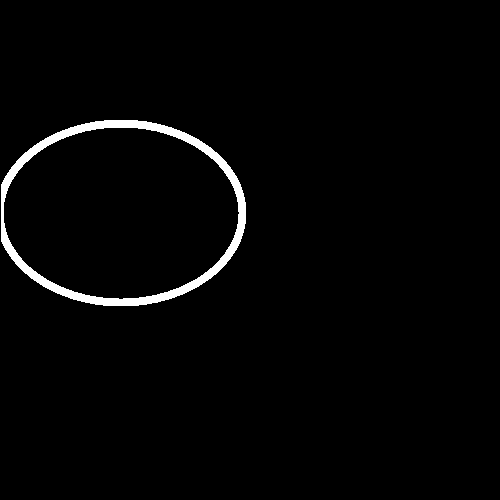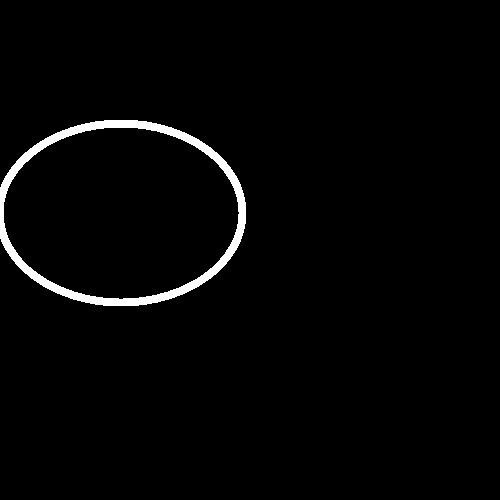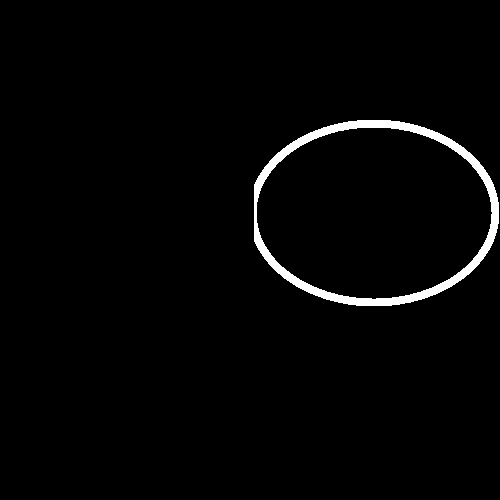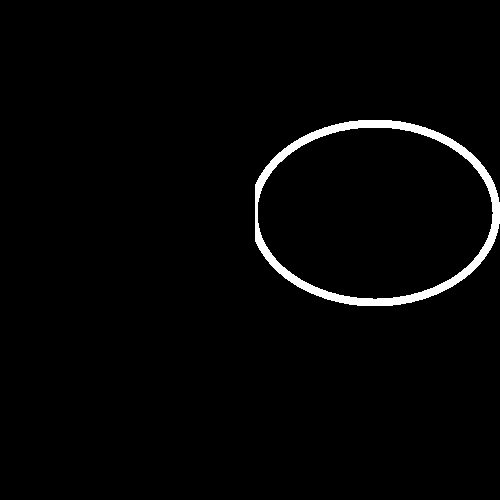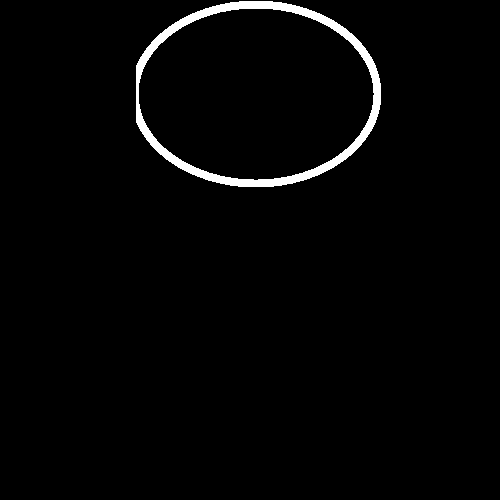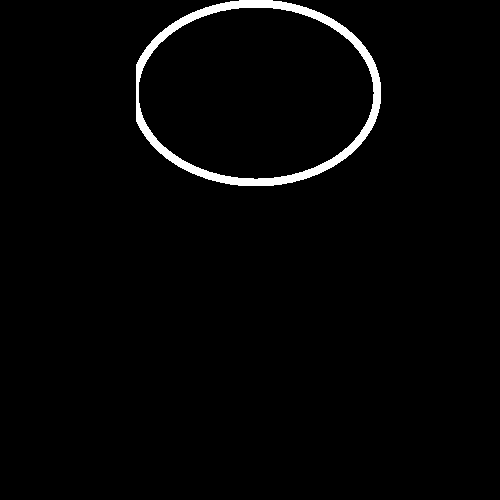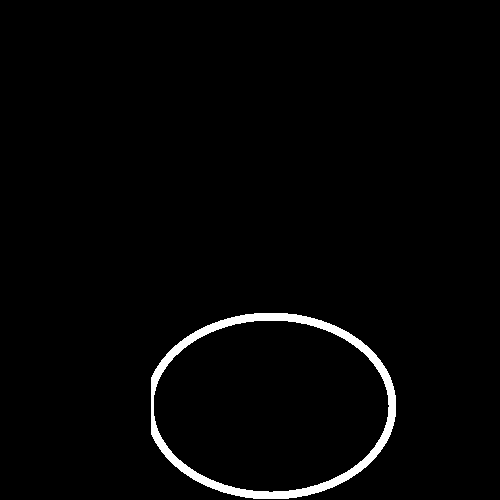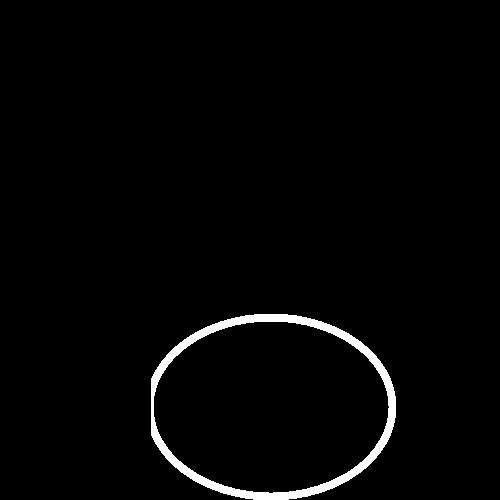Reputation: 1282
How to ignore/remove contours that touch the image boundaries
I have the following code to detect contours in an image using cvThreshold and cvFindContours:
CvMemStorage* storage = cvCreateMemStorage(0);
CvSeq* contours = 0;
cvThreshold( processedImage, processedImage, thresh1, 255, CV_THRESH_BINARY );
nContours = cvFindContours(processedImage, storage, &contours, sizeof(CvContour), CV_RETR_EXTERNAL, CV_CHAIN_APPROX_NONE, cvPoint(0,0) );
I would like to somehow extend this code to filter/ignore/remove any contours that touch the image boundaries. However I am unsure how to go about this. Should I filter the threshold image or can I filter the contours afterwards? Hope somebody knows an elegant solution, since surprisingly I could not come up with a solution by googling.
Upvotes: 5
Views: 10842
Answers (3)
Reputation: 1091
Update 2021-11-25
- updates code example
- fixes bugs with image borders
- adds more images
- adds Github repo with CMake support to build example app
Full out-of-the-box example can be found here: C++ application with CMake
General info
- I am using OpenCV 3.0.0
- Using
cv::findContoursactually alters the input image, so make sure that you work either on a separate copy specifically for this function or do not further use the image at all
Update 2019-03-07: "Since opencv 3.2 source image is not modified by this function." (see corresponding OpenCV documentation)
General solution
All you need to know of a contour is if any of its points touches the image border. This info can be extracted easily by one of the following two procedures:
- Check each point of your contour regarding its location. If it lies at the image border (x = 0 or x = width - 1 or y = 0 or y = height - 1), simply ignore it.
- Create a bounding box around the contour. If the bounding box lies along the image border, you know the contour does, too.
Code for the second solution (CMake):
cmake_minimum_required(VERSION 2.8)
project(SolutionName)
find_package(OpenCV REQUIRED)
set(TARGETNAME "ProjectName")
add_executable(${TARGETNAME} ./src/main.cpp)
include_directories(${CMAKE_CURRENT_BINARY_DIR} ${OpenCV_INCLUDE_DIRS} ${OpenCV2_INCLUDE_DIR})
target_link_libraries(${TARGETNAME} ${OpenCV_LIBS})
Code for the second solution (C++):
bool contourTouchesImageBorder(const std::vector<cv::Point>& contour, const cv::Size& imageSize)
{
cv::Rect bb = cv::boundingRect(contour);
bool retval = false;
int xMin, xMax, yMin, yMax;
xMin = 0;
yMin = 0;
xMax = imageSize.width - 1;
yMax = imageSize.height - 1;
// Use less/greater comparisons to potentially support contours outside of
// image coordinates, possible future workarounds with cv::copyMakeBorder where
// contour coordinates may be shifted and just to be safe.
// However note that bounding boxes of size 1 will have their start point
// included (of course) but also their and with/height values set to 1
// but should not contain 2 pixels.
// Which is why we have to -1 the "search grid"
int bbxEnd = bb.x + bb.width - 1;
int bbyEnd = bb.y + bb.height - 1;
if (bb.x <= xMin ||
bb.y <= yMin ||
bbxEnd >= xMax ||
bbyEnd >= yMax)
{
retval = true;
}
return retval;
}
Call it via:
...
cv::Size imageSize = processedImage.size();
for (auto c: contours)
{
if(contourTouchesImageBorder(c, imageSize))
{
// Do your thing...
int asdf = 0;
}
}
...
Full C++ example:
void testContourBorderCheck()
{
std::vector<std::string> filenames =
{
"0_single_pixel_top_left.png",
"1_left_no_touch.png",
"1_left_touch.png",
"2_right_no_touch.png",
"2_right_touch.png",
"3_top_no_touch.png",
"3_top_touch.png",
"4_bot_no_touch.png",
"4_bot_touch.png"
};
// Load example image
//std::string path = "C:/Temp/!Testdata/ContourBorderDetection/test_1/";
std::string path = "../Testdata/ContourBorderDetection/test_1/";
for (int i = 0; i < filenames.size(); ++i)
{
//std::string filename = "circle3BorderDistance0.png";
std::string filename = filenames.at(i);
std::string fqn = path + filename;
cv::Mat img = cv::imread(fqn, cv::IMREAD_GRAYSCALE);
cv::Mat processedImage;
img.copyTo(processedImage);
// Create copy for contour extraction since cv::findContours alters the input image
cv::Mat workingCopyForContourExtraction;
processedImage.copyTo(workingCopyForContourExtraction);
std::vector<std::vector<cv::Point>> contours;
// Extract contours
cv::findContours(workingCopyForContourExtraction, contours, cv::RetrievalModes::RETR_EXTERNAL, cv::ContourApproximationModes::CHAIN_APPROX_SIMPLE);
// Prepare image for contour drawing
cv::Mat drawing;
processedImage.copyTo(drawing);
cv::cvtColor(drawing, drawing, cv::COLOR_GRAY2BGR);
// Draw contours
cv::drawContours(drawing, contours, -1, cv::Scalar(255, 255, 0), 1);
//cv::imwrite(path + "processedImage.png", processedImage);
//cv::imwrite(path + "workingCopyForContourExtraction.png", workingCopyForContourExtraction);
//cv::imwrite(path + "drawing.png", drawing);
const auto imageSize = img.size();
bool liesOnBorder = contourTouchesImageBorder(contours.at(0), imageSize);
// std::cout << "lies on border: " << std::to_string(liesOnBorder);
std::cout << filename << " lies on border: "
<< liesOnBorder;
std::cout << std::endl;
std::cout << std::endl;
cv::imshow("processedImage", processedImage);
cv::imshow("workingCopyForContourExtraction", workingCopyForContourExtraction);
cv::imshow("drawing", drawing);
cv::waitKey();
//cv::Size imageSize = workingCopyForContourExtraction.size();
for (auto c : contours)
{
if (contourTouchesImageBorder(c, imageSize))
{
// Do your thing...
int asdf = 0;
}
}
for (auto c : contours)
{
if (contourTouchesImageBorder(c, imageSize))
{
// Do your thing...
int asdf = 0;
}
}
}
}
int main(int argc, char** argv)
{
testContourBorderCheck();
return 0;
}
Problem with contour detection near image borders
OpenCV seems to have a problem with correctly finding contours near image borders.
For both objects, the detected contour is the same (see images). However, in image 2 the detected contour is not correct since a part of the object lies along x = 0, but the contour lies in x = 1.
This seem like a bug to me. There is an open issue regarding this here: https://github.com/opencv/opencv/pull/7516
There also seems to be a workaround with cv::copyMakeBorder (https://github.com/opencv/opencv/issues/4374), however it seems a bit complicated.
If you can be a bit patient, I'd recommend waiting for the release of OpenCV 3.2 which should happen within the next 1-2 months.
New example images: Single pixel top left, objects left, right, top, bottom, each touching and not touching (1px distance)
Example images
- Object touching image border
- Object not touching image border
- Contour for object touching image border
- Contour for object not touching image border
Upvotes: 10

Reputation: 1777
If anyone needs this in MATLAB, here is the function.
function [touch] = componentTouchesImageBorder(C,im_row_max,im_col_max)
%C is a bwconncomp instance
touch=0;
S = regionprops(C,'PixelList');
c_row_max = max(S.PixelList(:,1));
c_row_min = min(S.PixelList(:,1));
c_col_max = max(S.PixelList(:,2));
c_col_min = min(S.PixelList(:,2));
if (c_row_max==im_row_max || c_row_min == 1 || c_col_max == im_col_max || c_col_min == 1)
touch = 1;
end
end
Upvotes: 0

Reputation: 169
Although this question is in C++, the same issue affects openCV in Python. A solution to the openCV '0-pixel' border issue in Python (and which can likely be used in C++ as well) is to pad the image with 1 pixel on each border, then call openCV with the padded image, and then remove the border afterwards. Something like:
img2 = np.pad(img.copy(), ((1,1), (1,1), (0,0)), 'edge')
# call openCV with img2, it will set all the border pixels in our new pad with 0
# now get rid of our border
img = img2[1:-1,1:-1,:]
# img is now set to the original dimensions, and the contours can be at the edge of the image
Upvotes: 5
Related Questions
- OpenCV: removing contours from external contours
- How to ignore a image region for contour detection, OpenCV
- OpenCV - How to remove small line segments from contour?
- filtering unwanted contours - opencv with C++
- How to remove inside contour in OpenCV
- Removing contours from an image
- C++ OpenCV How to eliminate small edges or small area of contours
- How to fill contours that touch the image border?
- remove all of a contour from image
- C++ OpenCV Eliminate smaller Contours
